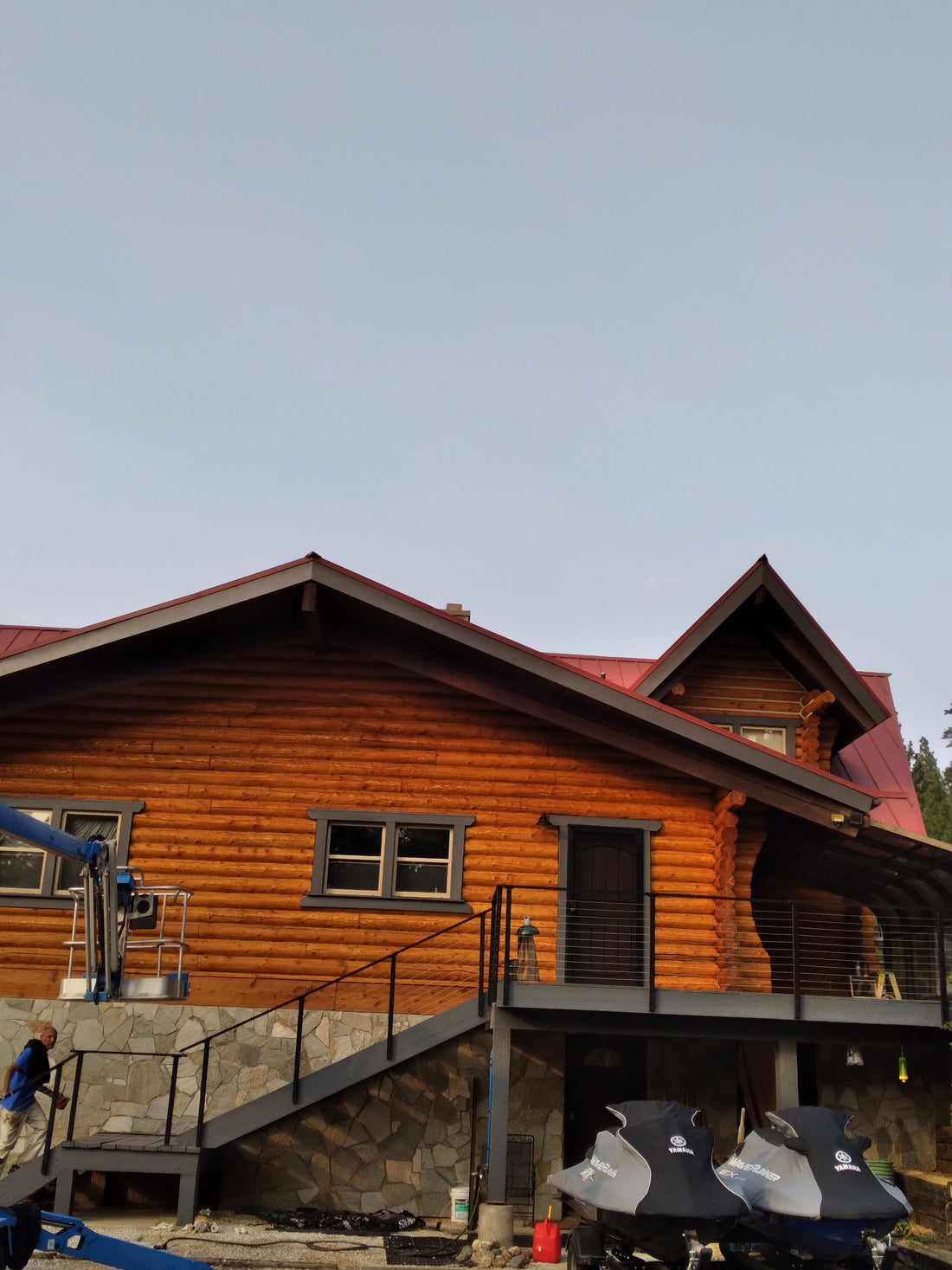
Exterior Wood Siding Stains: Know the 3 types available and decide which is best for your project
Share
When it comes to protecting your exterior wood siding, choosing the right stain is crucial. With so many options available, it can be overwhelming to decide which type of stain is best for your project. To help you make an informed decision, let's explore the three main types of exterior wood siding stains and their unique characteristics. Also, beware of stains you can purchase in box stores or hardware store shelves, they are formulated down (watered down) to be easy to use for all types of customers and all skill sets. Look for a professional grade or contractor grade brand of products designed specifically for the log home or wood siding industries.
What are the 3 types of exterior wood siding stains?
1. Transparent Stains: Transparent stains are ideal for showcasing the natural beauty of the wood. They provide a subtle hint of color while allowing the wood's grain and texture to shine through. Transparent stains are best suited for new or high-quality wood that is in excellent condition.
2. Semi-Transparent Stains: Semi-transparent stains offer a balance between color and wood grain visibility. They provide more pigment than transparent stains, offering better UV protection and durability. Semi-transparent stains are a popular choice for older wood that may have imperfections but still deserves to be highlighted.
3. Solid Stains: Solid stains, also known as opaque stains, offer the most protection and coverage. They provide a solid color finish that hides the wood grain while offering maximum durability and UV protection. Solid stains are perfect for weathered or damaged wood that needs a fresh look and added protection.
How to decide which stain is best for your project?
When deciding which exterior wood siding stain is best for your project, consider the following factors:
1. Wood Condition: Assess the condition of your wood siding. If it's new and in good shape, a transparent stain may be the best choice. For older or weathered wood, a semi-transparent or solid stain may be more suitable.
2. Desired Look: Think about the look you want to achieve. If you prefer a natural look with minimal color, a transparent stain is the way to go. For a more pronounced color or to cover imperfections, consider a semi-transparent or solid stain.
3. Maintenance Level: Consider how much maintenance you're willing to commit to. Transparent stains may require more frequent reapplication, while solid stains offer longer-lasting protection with higher costs when the time comes for maintenance. Choose a stain that aligns with your long term goals and maintenance preferences.
By understanding the differences between transparent, semi-transparent, and solid stains, you can make an informed decision on which type of exterior wood siding stain is best for your project. Remember to consider the wood condition, desired look, and maintenance level to ensure long-lasting protection and a beautiful finish for your exterior wood siding.
